My grandma made this stuff she called “mushroom tea.” It was a big jar filled with murky liquid and floating blobs. It certainly raised some eyebrows, and I’m sure that’s half of why she did it.
She and her friends shared the mushrooms and drank the tea for good health. It was a little fizzy and smelled faintly of vinegar. I never dared taste it. I think my mom even advised against it.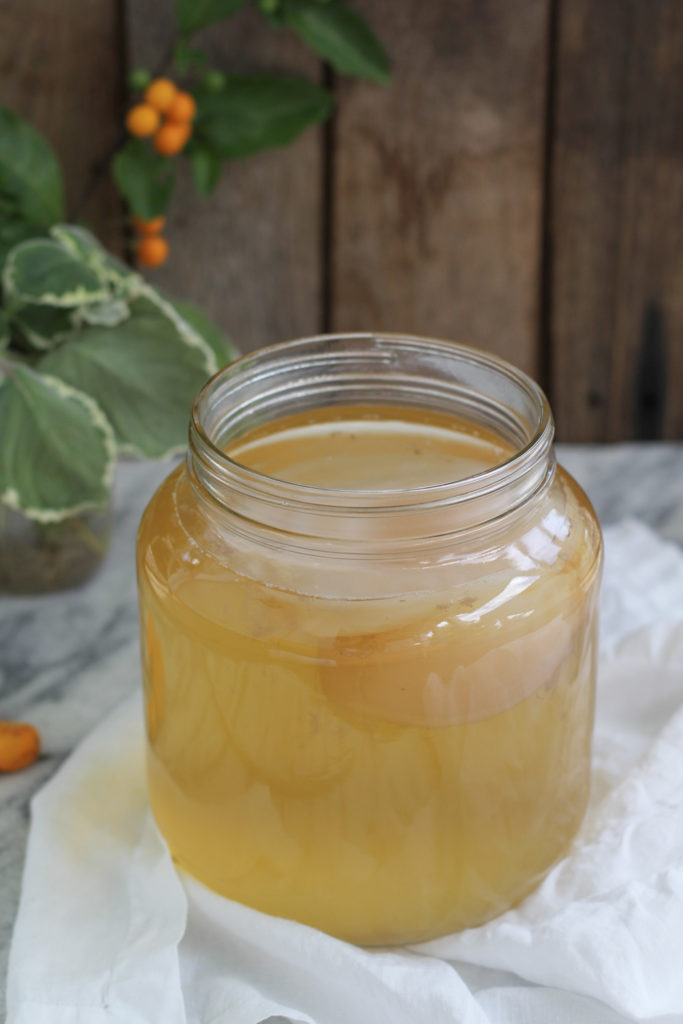 Fast-forward a couple decades, and I’m sitting at a kombucha workshop at Bok Tower Gardens. The jars in front of me reminded me of those jars on my grandma’s counter, and then it dawned on me: grandma’s mushroom tea and kombucha are one and the same. The mushroom is actually a scoby, which is an acronym for “symbiotic culture of bacteria and yeast.” This colony looks like a big slippery blob, and it magically transforms sweet tea into an effervescent brew that is actually quite tasty.
Fast-forward a couple decades, and I’m sitting at a kombucha workshop at Bok Tower Gardens. The jars in front of me reminded me of those jars on my grandma’s counter, and then it dawned on me: grandma’s mushroom tea and kombucha are one and the same. The mushroom is actually a scoby, which is an acronym for “symbiotic culture of bacteria and yeast.” This colony looks like a big slippery blob, and it magically transforms sweet tea into an effervescent brew that is actually quite tasty.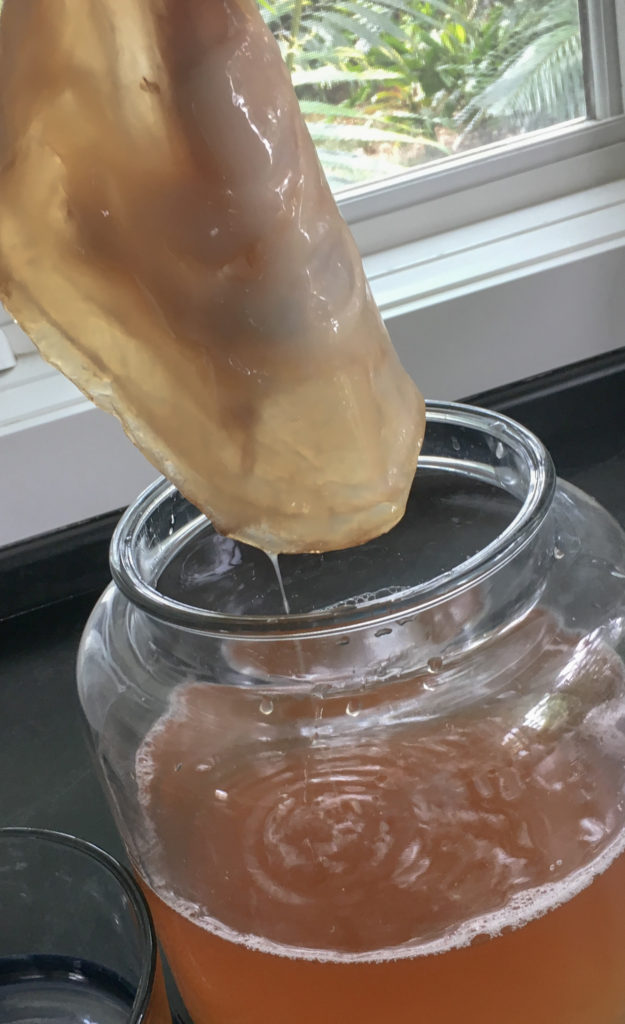 Kombucha was not invented by hippies. It’s a tradition that has carried on for centuries. There’s evidence of it in historical writings from Eastern Europe, Russia, and Japan, and it has long been touted as an “elixir for long life.” It’s low in alcohol (between 0.5- 2%) and filled with lots of nutrients and probiotics. Some people say it gives them energy, others say it helps with digestion and immunity. I say it’s fun to ferment stuff and it tastes good, especially once you start adding herbs and fruit.
Kombucha was not invented by hippies. It’s a tradition that has carried on for centuries. There’s evidence of it in historical writings from Eastern Europe, Russia, and Japan, and it has long been touted as an “elixir for long life.” It’s low in alcohol (between 0.5- 2%) and filled with lots of nutrients and probiotics. Some people say it gives them energy, others say it helps with digestion and immunity. I say it’s fun to ferment stuff and it tastes good, especially once you start adding herbs and fruit. Most fermented foods require cooler temperatures so the fermentation happens slowly. Kombucha is the opposite. It needs to ferment a little faster so the bacteria and yeast stay synchronized. Florida’s climate is perfect for it. My kitchen never falls outside the ideal range, which is between 71-81 degrees. As long as it’s not above 86 degrees, you’ll be in good shape. Colder temperatures can lead to mold. For more on that and any other questions, The Big Book of Kombucha is your best guide.
Most fermented foods require cooler temperatures so the fermentation happens slowly. Kombucha is the opposite. It needs to ferment a little faster so the bacteria and yeast stay synchronized. Florida’s climate is perfect for it. My kitchen never falls outside the ideal range, which is between 71-81 degrees. As long as it’s not above 86 degrees, you’ll be in good shape. Colder temperatures can lead to mold. For more on that and any other questions, The Big Book of Kombucha is your best guide.
To get started, you’ll need a scoby from a reputable source. If you know anyone who brews kombucha, they’ll be happy to give you one. Otherwise, here are two places to buy them:
Besides the scoby, it’s just sugar, water, and tea.
Sugar is a necessary food for the yeast and bacteria to successfully ferment your brew, and you can’t make kombucha without it. Organic evaporated cane sugar is the best choice, but plain white sugar will work just as well. Once fermented, there are very small amounts of residual sugars in the final brew.
Use bottled or filtered water if possible.
You can use plain green, black, or white tea. Herbal tea won’t work because it lacks the nutrients the scoby needs. Also avoid flavorings (like bergamot in Earl Grey) that can be harmful to the scoby. You’ll get the opportunity to flavor the brew later. I’ll post a guide for that, along with my favorite flavors, later in the week.
Here’s a quick recipe so you can make your own. Cheers!
- 7 cups filtered water
- 2 tablespoons loose-leaf tea (green, black, or white)*
- 1/2 cup sugar
- 1 scoby
- 1/2-1 cup liquid your scoby was stored or packaged in
- half-gallon glass jar
- mesh strainer
- linen or cotton cloth (not cheesecloth)
- rubberband
- Heat the water just to boiling and add the tea. Steep for 15 minutes.
- While the tea steeps, clean a large glass jar* with very hot soapy water and rinse well.
- Strain the tea into the jar. Add the sugar and stir until it dissolves.
- Allow it to cool to room temperature.
- Once the sweet tea is below 90 degrees, you can add your scoby along with 1/2 cup or more of the liquid in which the scoby has been stored.
- Cover it with a cloth and secure it with a rubber band. This allows it to get some oxygen but keeps the fruit flies out. If fruit flies get in there, you've got to throw out your kombucha and the scoby and start over.**
- Place it in a well-ventilated place, out of the way of direct sunlight. Indirect is fine. The kitchen counter is ideal.
- The average brew takes about a week, but you can taste it every day if you like. You'll notice a new scoby forms on top. Just take a straw and slide it beneath the new scoby. Take a sip or pull out a sample. It's up to you when it reaches the ideal balance of sweet and sour. If you prefer it sweeter, it might only take 5 days. The time it takes to brew can vary every time you make it.
- When it's ready, you'll see you have a new scoby on top plus the old scoby underneath. Dip them out and move to a jar or glass dish, and pour on a cup of liquid to cover them. You'll use them to start your next batch, and you can share one with a friend.
- Funnel the kombucha into clean glass bottles and refrigerate.
- If you're ready to experiment with some fun tropical flavors, check out my next recipe.
- *I think black tea works best, but I also mix black and green. I've recently upped the amount of tea I use to two tablespoons.
- Use only lead-free glass to brew kombucha. The acidity of kombucha will leach chemicals from plastics into your brew.
- **Fruit flies love kombucha. Use cotton or linen fabric, but not cheesecloth, which fruit flies will find their way into even if it's folded over. Check online for directions to make fruit fly traps if they become a problem. I find the ones with apple cider vinegar and dish soap work well.
- ***Check out Kombucha Kamp (link in the post above) for any questions or for photos of what a healthy brew looks like. Although I think moldy kombucha is rare in Florida, it's worth mentioning that it is not safe to drink. Apparently this is more common in colder temperatures, or if you try to brew it in the refrigerator. The mold will be dry and fuzzy, and white, green, or blue. If that happens, throw out the brew and the scoby and start over.

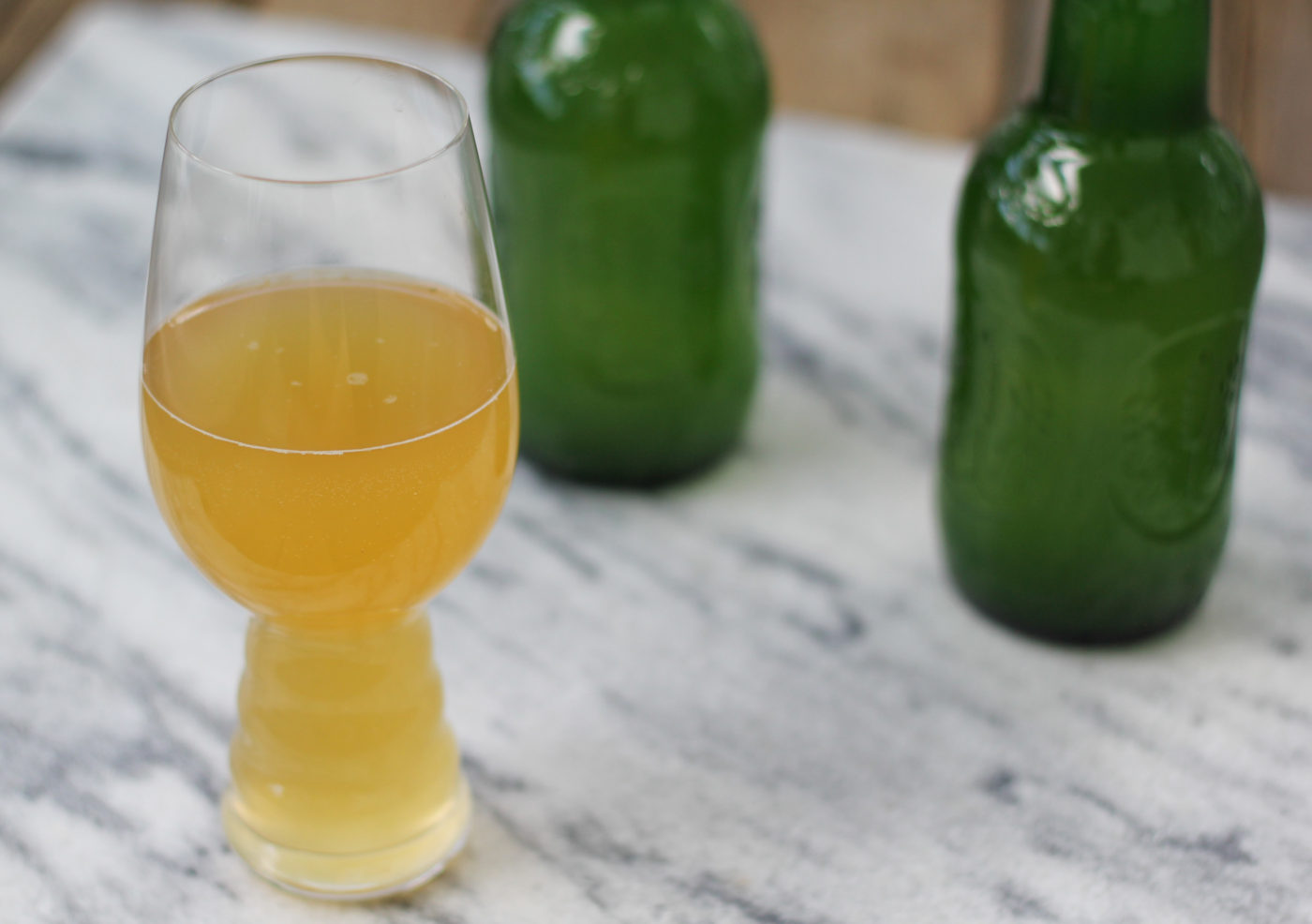
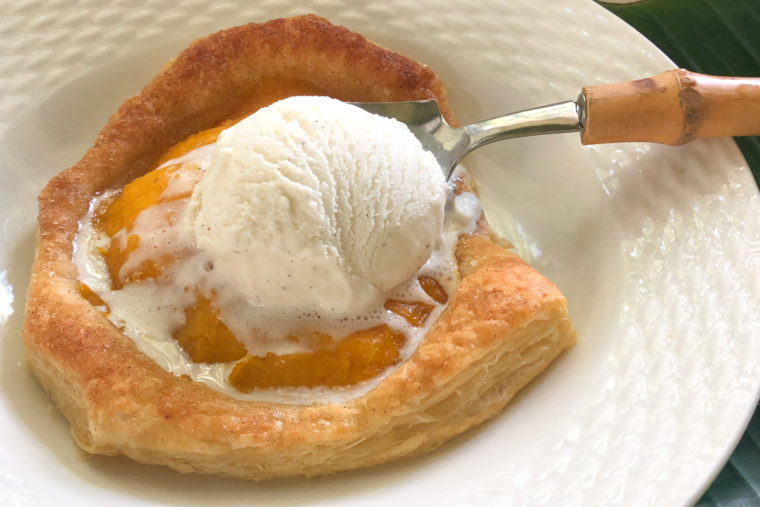
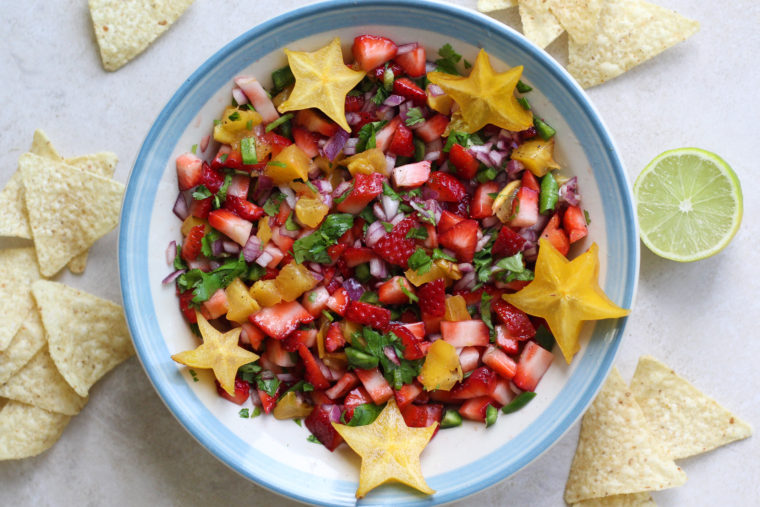
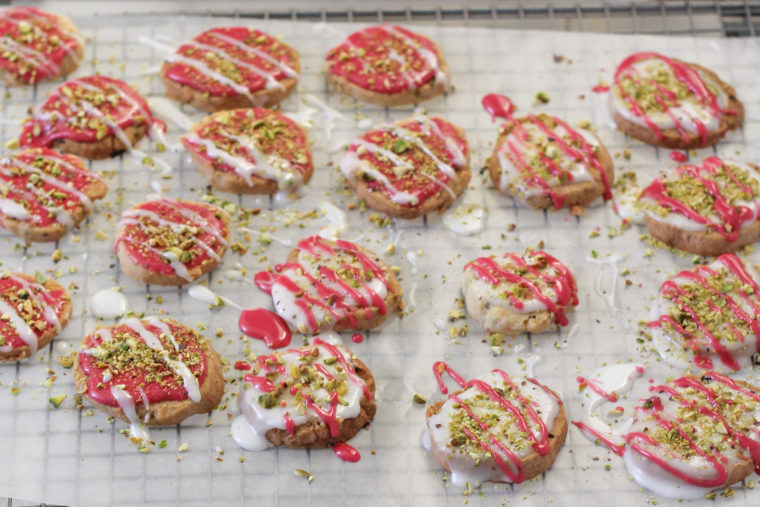
Kombucha tastes like carbonated vinegar. Not for me, but whatever floats your taste bud boat.
No doubt about it, kombucha’s not for everyone! But if you only brew it for a few days it stays sweet and fruity and only lightly fizzy.